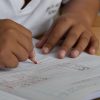The good routine – Habits-rewards loop
Good routines play a big role in building good habits which have their own rewards – Jayalakshmi Vaidyanathan
“We are what we repeatedly do. Excellence, then, is not an act, but a habit.” — Aristotle
 When ten-year-old Kiran comes home from school, she changes her clothes, has a snack and reads. After reading for an hour, she goes out to play with her friends. She returns after play to complete her homework and has dinner with the family.
When ten-year-old Kiran comes home from school, she changes her clothes, has a snack and reads. After reading for an hour, she goes out to play with her friends. She returns after play to complete her homework and has dinner with the family.
This routine of reading, snacking, playing outdoors, completing homework, the family dinner and finally, going to bed feeling fulfilled and happy, contributes to Kiran’s positive behaviour, healthy self-esteem and reduced stress. By establishing a set routine and positive habits, Kiran is unconsciously developing good habits.
American writer, coach and strategist Jan Stanley endorses the power of routines which develop good habits. “Start small for a fulfilling life,” she says. “Routine is one of the most powerful tools for developing good habits which last a lifetime and enable children to lead meaningful and fulfilling lives in adulthood.”
According to Stanley, parents should help children to develop a routine, to encourage good habits — homework, sufficient sleep, hobbies, etc. The idea is to develop a healthy routine and build on it and, over time, they become good habits. To inculcate good habits in children, parents need to set a working example for children by modelling them. For instance, it is easier for a child to develop a reading habit, if parents have the habit of reading regularly and switching off electronic devices during the reading hour. This will encourage children to read or study without distraction.
How a ‘habit loop’ forms
In his best-selling book The Power of Habit, Charles Duhigg, investigative reporter and Pulitzer Prize-winner, says that every habit needs a cue, that makes behaviour unfold automatically. A cue can be a location, time of day, an emotional state, other people, or just a pattern of behaviour that establishes a routine. The next part is to make a routine habitual.
In Duhigg’s own case, the urge to eat a cookie (biscuit) between 3 to 3.30 p.m was the cue. Nibbling the cookie while chatting with friends, became routine and later a habit. The last component of the routine-habit continuum is reward. To figure out what the reward of the cookie eating habit was, Duhigg conducted various experiments on himself, and realised the reward was not the cookie, but socialisation. Therefore, when he experienced the urge for a cookie, he got up and moved around and spoke to a friend for ten minutes. Soon, the urge to ingest a cookie completely disappeared. A cue transformed a routine into a good habit.
Create new habits
Similarly, children subconsciously develop routines, then habits for rewards. If paper-folding and origami designs get a child appreciation from her family, then she will continue with the activity. The habit of creativity will become ingrained. Rewards will flow from creativity.
There is no dearth of studies which show that positive habits can be formed. Timothy Pychyl, psychology professor at Carleton University, Ottawa, writes in Psychology Today that “breaking habits requires establishing a new behavioural pattern, a new prepotent response; a new habit.”
So, what are the routines you want your children to develop, so they become good habits? Here are some suggestions.
Tips to help children develop a routine
Encourage continuity of routines for the first 30 days
Keep distractions at bay
Start with small targets
Avoid nagging
Reward children for developing healthy routines
Encourage effort and persistence
Develop new habits through routines together with your child, so that she learns by example and appreciates your efforts to enable her to win rewards.
Developing good habits help children to
Automate good routines
Lessen deliberation angst
Reserve energy and willpower
Reap the rewards of parental and social approval
(Jayalakshmi Vaidyanathan is founder of Bengaluru-based Satori Life Skills Solutions)
















Add comment